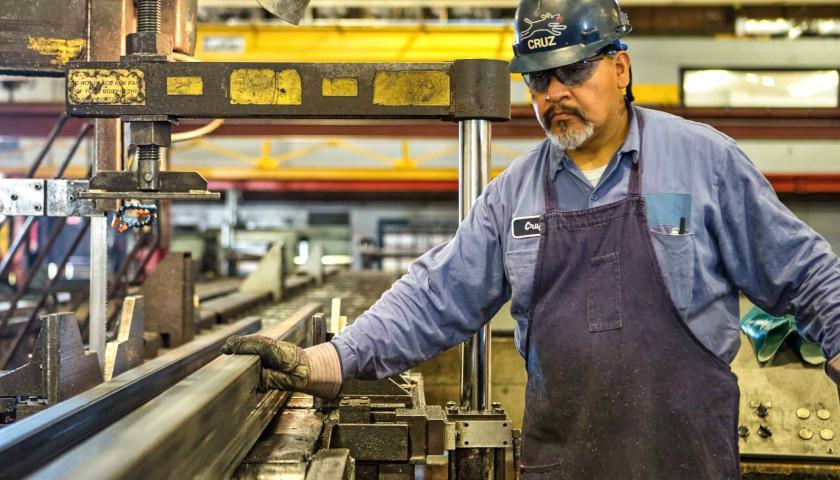by Bob McEwen
The heartland of America stands as a testament to the nation’s industrious spirit. It’s rich history of agriculture, manufacturing, and innovation have propelled industries and created goods essential to the country’s growth, exemplifying the American spirit of creativity and ingenuity.
The American steel industry has played a central role in this story and is in many ways synonymous with manufacturing in the Midwest. At its peak in the early 1970s, American steel mills produced over 136 million tons of steel – much of it in Ohio, Indiana, and Western Pennsylvania – and accounted for nearly one-fifth of global production. Today, however, the industry faces many threats.
A flood of foreign steel in the decades since the apex of American steel production has led to many closures and contractions within the industry, decimating steel towns such as Youngstown and leading to the loss of hundreds of thousands of jobs. Such difficult realities, paired with a further round of high-profile acquisitions within the steel industry in recent years, now mean that just a few major steel producers remain within the United States.
Now, the emergence of no less than two unsolicited buyout offers in recent months for one of America’s largest and oldest steel producers, U.S. Steel, has reignited the debate about the proper size and scope of the steel industry in the United States. There are several important factors that should be taken into consideration as part of the discussion.
Generally, consolidation is not cause for concern. In many cases it is a natural part of the ebb and flow of free markets and has even proven to lower costs and improve patient outcomes in certain parts of the healthcare industry, for example. But given the fact that the steel industry has already experienced a substantial amount of consolidation in the last fifty years, it is important to ensure that any additional industry reorganization does not threaten Ohio jobs, undermine the ability to keep pace with foreign companies, or jeopardize competition in a key American sector.
The negative impact such consolidations could have on Ohio’s workforce is a core concern that must be taken into account. The Buckeye State lost 750,000 manufacturing jobs from 1969-2009 and if major employers like U.S. Steel enter into the wrong partnership, this could lead to additional plant closures and job losses. For Ohioans who depend on steel-related jobs to support their families and communities, this would be economically devastating. Cities and towns that have long relied on the steel industry would bear the brunt of these job cuts, leading to a domino effect of reduced income, declining property values, and strained local services.
Today, the Chinese produce more steel than the rest of the world combined, leaving the United States in a significant steel trade deficit. The United States now imports 3 times as much steel as it produces, in fact, making the country the top steel importer in the world. Such a reliance on this foreign supply chain poses a threat to our economy. Steel is a key part of many pieces of infrastructure that underpin commerce in the United States such as the electrical grid as well as roads and bridges. Therefore, steps should therefore be taken to minimize our exposure.
Beijing’s steel dominance also has grave national security implications. A 2018 Department of Commerce report on The Effect of Imports of Steel on the National Security found that “domestic steel production is vital to national security” and that Chinese actions have been weakening the long term viability of domestic producers. This, in turn, could place the Pentagon in a tough position as American steel is a critical component of just about every aircraft, water vessel, and land vehicle the military uses. Allowing foreign or domestic actions to reduce the number of steel suppliers in a way that could leave the supply chain more vulnerable to disruptions or lead to higher prices for the U.S. military must be avoided.
Countering these concerning trends will require significant investments into the research and development of new technologies that are encouraged by healthy market competition. The need to outperform rivals is generally what motivates businesses to constantly innovate and create jobs as well as develop better products, services, and processes. But allowing just a few giant corporations to dominate the American steel industry could stunt such efforts and impede the economic progress that would help the United States become more independent from Chinese steel. As any such proposals to further consolidate the American steel industry work their way through Washington, regulators would be wise to keep these important points in mind.
– – –
Bob McEwen represented Ohio in the Congress of the United States for six terms and served on the Committee on Public Works and Transportation





